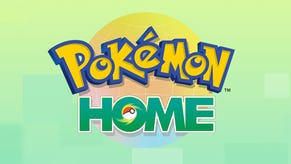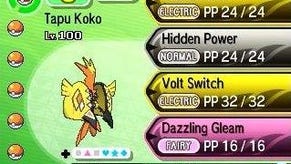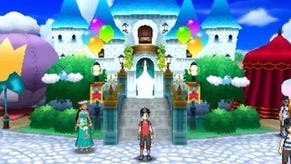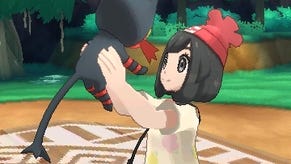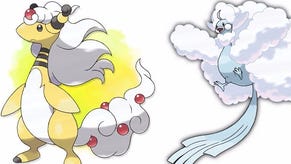Pokémon Sun and Moon review
Big Kahuna.
Pokémon has often been a series trading on nostalgia. That warm, fuzzy and sort of sickening feeling some of us are prone to when thinking back to simpler times of link cables, your dad's Game Boy, and maybe the occasional semi-exploitative playground trade. Pokémon's relied on the stirring up of wistful reflection for so long that even pointing it out feels like a tired and unimaginative observation itself.
Yet with Pokémon Sun and Moon, things have changed. Junichi Masuda, a founding member of Pokémon developer Game Freak, legendary creator of the 'Masuda method' and long-term game director and composer, has dutifully watched over some of my favourite childhood memories from the days of the original Ruby and Sapphire right up to the latest generation of Pokémon X and Y. The guard changed, however, with the recent Omega Ruby and Alpha Sapphire remakes and, for the first time in more than a decade, a main series Pokémon game has a new director.
That man is Shigeru Ohmori, and the result is one of the most characterful, exciting, and fun Pokémon games of them all. It feels curated, crafted, with a cohesive vision in mind that informs everything throughout - from the way your Ride Sharpedo skips over waves like a jet ski to the comical 'whappah' sound effect of a challenging Blackbelt. Without willing to set too many Pokéfan pulses a-racing, that overflowing sense of style and character means that Pokémon Sun and Moon are genuine rivals to Gold and Silver as some of the very best games in the series.
Sun and Moon brings some pleasing-but-predictable tweaks to an otherwise protected central formula. Ordinarily, with each new Pokémon game we get more Pokémon to catch, more towns to visit, some more slightly uninspiring sideshows - beauty pageants, athletics tournaments, et cetera - and another ten-year-old on a quest be the very best, just because.
But with Ohmori's direction the sacred formula hasn't just been readjusted. In some cases it's been totally reinvented. Gyms and Gym Leaders; the Elite Four; Day Care; HMs; out-of-combat moves; even recent poster children like Mega-Evolution, the hallowed secrecy of Individual Values, and the series' very operating parable of how we all need to just love our Pokémon have been either re-worked, re-thought, or totally removed.

That, I admit, was a little scary for a someone who has lent so heavily on the game's crutches of comfort and familiarity. I'm one of the more staunch defenders of HMs, for instance; they force you into an old-school, zero-sum tradeoff between the most powerful team and the one which is most well-prepared, and balancing that - finding the best 'HM Slave' and team to go with it - became something of an art in itself for the community, too. But for every cause for concern, on learning something else had been tweaked or changed, my hesitancy has been proven wrong. Time and again, Pokémon Sun and Moon surprises with its thoughtfulness, detail, and craft.
A major change is that, instead of the traditional system of eight Gyms and an Elite Four, the player must now take on a series of seven Island Challenges, each comprised of a Captain, a trial, a powerful Totem Pokémon, and a Z Move-enabling Crystal as a reward. The trials vary wildly, from collecting hidden ingredients to carefully analysing Pokémon dances, but whilst that all sounds frightfully gimmicky they are executed well, with variation and identifiable character letting them stand well above the sterile, rigid, repetitive grind of the battle-focused Gyms of old.
Completing all of the trials on an island will grant you a battle with that island's Kahuna, meanwhile. Powerful trainers who maintain a close bond with their island's respective guardian Pokémon, the Tapu, island Kahunas are also some of the best things about Sun and Moon. They benefit from some wonderful animation, an elongated involvement with the story, and some genuinely funny cutscenes - yes cutscenes! In Pokémon! And they're good! - and with that added room to grow, those characters flourish.
The same can often be said for the new Pokémon themselves. The debate over the franchise's relentless introduction of new creatures to the Pokédex, and their respective inability to capture imaginations of both the hardcore and the wider Pokémon-acknowledging public, will of course continue. Yet a point many have grasped at but never quite landed on is the fact that the newly introduced Pokémon of generations past aren't failing to inspire because they're somehow worse - there's a pile of slime and a magnet for every bag of rubbish and floating keychain, after all - but because they simply haven't been given the chance to do so. Aside from the odd blurt of exposition from a passing NPC, previous newcomers have had no time to make an impact; no detail, other than a line in the Pokédex, to bring a little flavour to the party, whilst the original 151 had the anime series, the films, and the trading cards we grew up with - and 600-odd fewer Pokémon to compete with, to boot.
Sun and Moon deftly handles that issue by corralling the Pokémon you'll find in the wild to a smaller number of more specific locations. The issue's also helped by a rebalanced experience system and Exp. Share item, too. With much lower experience yields, but a re-tooled Exp. Share, leaving it switched on generally means you can defeat a Route's trainers, catch all of it's Pokémon, and be just about the perfect level to tackle the next stage right away, without the need to grind. It's a decision that lends Sun and Moon some valuable momentum.
Being a devotee of Pokémon's competitive community - if, admittedly, as more observer and collector than participant - I can't ignore the drastic changes Sun and Moon bring to the competitive battling and training scene on top of the shifts in the main story.
Z Moves are the headline addition, and in light of what I would expect to be the huge impact they have on competitive battling that spotlight is rightly positioned. You can use just one Z Move per battle, but can equip as many Pokémon as you like with the enabling Z Crystals - much the same as Mega Stones and Mega-Evolution in generation six - and I would expect most tournaments to allow both a single Mega-Evolution and a single Z Move per battle. The significance will come from the fact that a Z Crystal empowers any move of that type from the Pokémon holding it, and so those previously handicapped by a weak movepool or offensive stat could now, all of a sudden, see far greater use.
There are also two other key additions to competitive play, and whilst their success will rely on the whims of Pokémon's diligent hardcore community, the potential is most certainly there. Battle Royals - not Royales, it's emphasised - pit four trainers against each other in a fantastically tense free-for-all. It's a genuinely worthwhile and brilliantly entertaining addition, especially when played locally, rather than the somewhat 'feature-creep' feel that's associated with Doubles and Triples of previous generations.
Sun and Moon also introduce Hyper Training, which breaks form in becoming the first open acknowledgement of Individual Values in-game. I've yet to fully test the mechanic - its main purpose is for working with Level 100 Pokémon, which was beyond the scope of possibility for this review - and thus the community will again be needed to explore it fully. The potential is there, however, to save hardcore battlers hundreds of hours of breeding time and drastically cut down the need for the more illicit practices like cloning online.
For all the bountiful new changes made, Pokémon Sun and Moon do have their flaws. The opening three or four hours - in fact the entire first island - is a slog through some very tiresome handholding. Fortunately however, once you break free of the game's overbearing protection, a far greater balance is found than the worrying decline in difficulty we've seen in previous entries. There's also an excess of Bug Pokémon in Alola, for an unknown reason - there are two separate Bug-Water-type species introduced here alone - whilst the region's Pokémon in general are frightfully slow compared to generations past.
These are minor blemishes on an otherwise immaculate entry. For too long, diving into a new Pokémon game has been about repetition and ritual. A sense has grown, over the years, that I was only really playing a new Pokémon entry because I couldn't have multiple saves on the old one. New Pokémon and their variously novel moves and mechanics were what drew me back, but only like updated player rosters would suck you into an annualised and otherwise unchanged sports game. Unabashed nostalgia and a compulsive fear of losing touch were the only reasons I cared.
With Pokémon Sun and Moon however, I have a new one: the world of Pokémon is finally, exactly that: a world, with charming, textured characters not just in the named friends and foes you meet, but the random people on your journey, the region you live in, the music, the Pokémon themselves and the very soul of the journey. At long last, Pokémon is not just back. With Sun and Moon, it feels fresh again.




